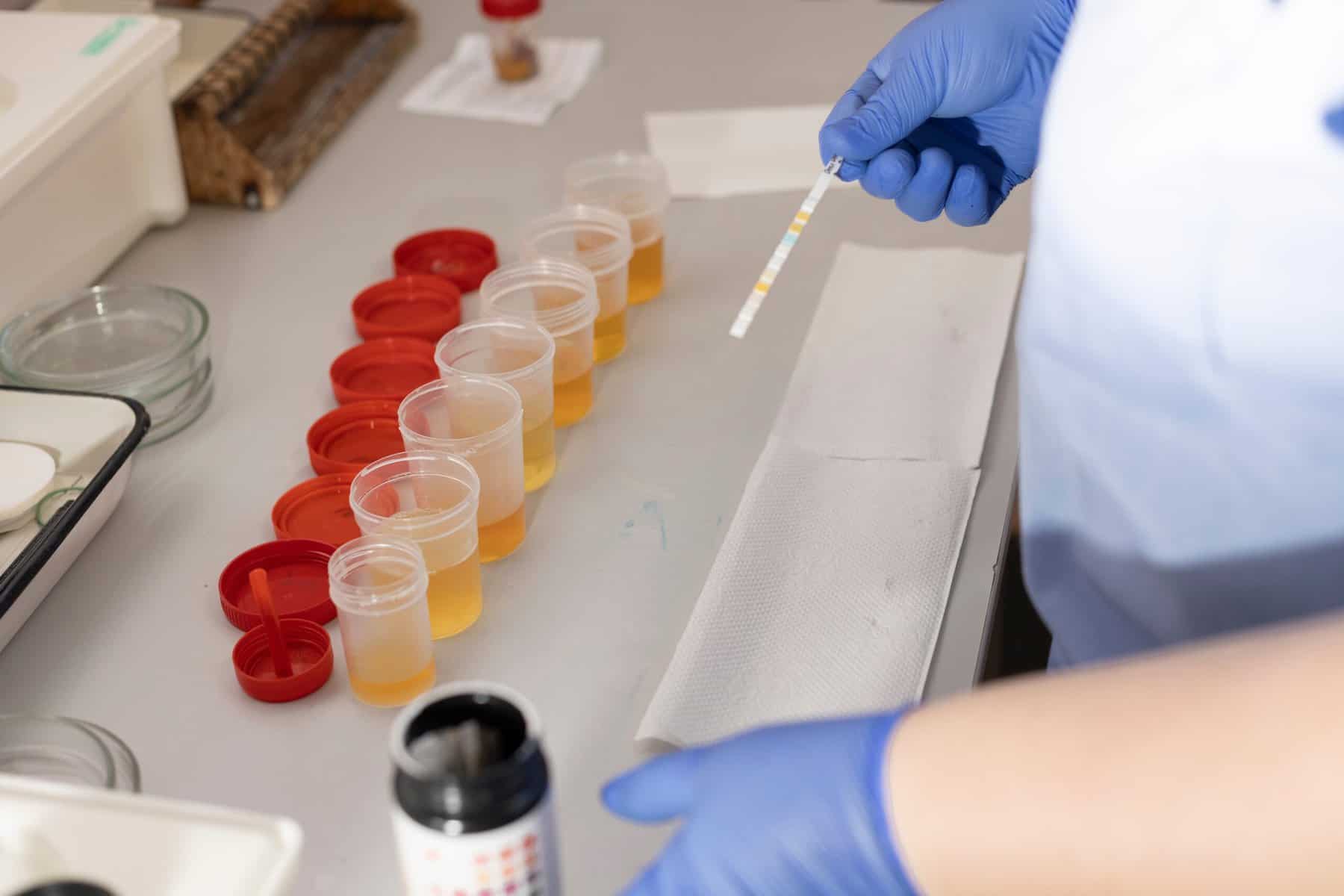Fentanyl is a highly potent synthetic opioid, often prescribed for severe pain management. It can be up to 100 times stronger than morphine, making it effective but also extremely dangerous when misused. As fentanyl abuse rises, it’s crucial to understand how long fentanyl stays in your system and its potential risks. At Lighthouse Recovery in Dallas, Texas, we help individuals overcome fentanyl addiction through comprehensive, personalized care.
Understanding Fentanyl
Fentanyl is a powerful synthetic opioid commonly prescribed for severe pain management, particularly in patients who have not responded to other painkillers. It provides effective pain relief by binding to opioid receptors in the brain, which leads to an intense release of dopamine, often resulting in a strong sense of euphoria and well-being. Due to its potency, fentanyl is highly addictive, especially when misused or taken without medical oversight. Available in various forms—including patches, tablets, and injections—it’s typically administered in medical settings under strict supervision to ensure safe, controlled dosing. However, misuse of fentanyl poses severe risks, as its potency is significantly higher than other opioids, leading to life-threatening consequences even at small doses.
How Fentanyl Works in the Body: Central Nervous System Effects
Fentanyl impacts the body primarily by depressing the central nervous system (CNS), which regulates vital functions such as breathing, heart rate, and blood pressure. This CNS depression can be dangerous, as it often leads to slowed breathing and, in extreme cases, respiratory failure. By slowing down the body’s natural responses, fentanyl can create a sense of calm and drowsiness, but it also carries the risk of overdose if misused. Once ingested or applied, the liver metabolizes fentanyl, and the duration it stays in the body can vary based on factors like dosage, frequency of use, body composition, and individual health conditions. This variation underscores the need for close monitoring, particularly in medical and addiction treatment settings.
Why Knowing Fentanyl’s Effects and Duration Matters
Understanding how fentanyl interacts with the body and the risks associated with its use is crucial, significantly as fentanyl-related overdose rates have risen dramatically in recent years. Recognizing how fentanyl affects the CNS, slows bodily functions, and metabolizes differently depending on individual health factors can help users and their families make informed decisions about treatment options. For individuals grappling with fentanyl addiction, awareness of these effects and the importance of careful, medically supervised treatment can be a vital step toward recovery.
Factors Affecting Duration
Several individual factors influence how long fentanyl remains detectable in the body. Each factor contributes to varying detection times across different users, from dosage to metabolism. Here’s a closer look at the primary factors that affect the duration of fentanyl in the system.
Dosage: Higher Doses Extend Presence in the System
The amount of fentanyl taken plays a critical role in how long it lingers in the body. Larger doses require more time for the body to metabolize, leading to a prolonged presence in the bloodstream and other tissues. This can mean longer detection times across testing methods for heavy or long-term users.
Method of Administration: Different Pathways, Different Duration
Fentanyl can be administered through various methods, each impacting absorption and elimination rates. Transdermal patches release fentanyl gradually, maintaining a steady presence in the system over time, while intravenous injections lead to a more immediate effect with a shorter detection window. Oral tablets and other methods fall somewhere in between, making the method of administration a critical factor in fentanyl’s duration within the body.
Metabolism and Body Composition: How Your Body Processes Fentanyl
An individual’s metabolic rate significantly influences fentanyl’s retention. Factors such as body fat percentage, liver health, and overall physical condition can speed up or slow the elimination process. Those with a faster metabolism may process and clear fentanyl more rapidly. In contrast, those with a higher body fat percentage or slower metabolic rate may retain the drug for extended periods.
Age and Health Conditions: Slower Metabolism in Older Adults
Age and specific health conditions can further affect fentanyl metabolism. Older adults or individuals with liver or kidney conditions may process fentanyl more slowly, leading to prolonged detection times. Conversely, younger, healthier individuals often have a faster metabolic rate, enabling them to clear the substance from their systems more quickly.
Fentanyl Detection Times
Understanding how long fentanyl stays in your system is crucial for those undergoing treatment, medical assessments, or drug testing. Detection times for fentanyl vary significantly depending on the testing method, dosage, and frequency of use. Here’s a breakdown of fentanyl detection windows across different testing methods, helping you understand what to expect with each type.
Urine Tests: Detecting Fentanyl Up to 72 Hours
Urine testing is the most common method for fentanyl detection, often used due to its accessibility and relatively extended detection window. Typically, fentanyl can be detected in urine from 24 to 72 hours after the last dose. For individuals with long-term or heavy use, this window may extend up to 96 hours, providing insight into recent substance use. Urine tests are widely used in clinical and employment settings due to their efficiency in identifying recent fentanyl intake.
Blood Tests: Short Detection Window for Immediate Results
Blood tests offer a shorter detection window for fentanyl, generally capturing the substance for up to 48 hours post-use. Blood tests are beneficial for emergencies, such as suspected overdose cases, as they can quickly determine the presence of fentanyl in the system. However, this shorter timeframe limits its use in routine testing scenarios.
Saliva Tests: Non-Invasive and Convenient for Recent Use
Saliva testing provides a noninvasive alternative for detecting fentanyl use. The detection range is 1 to 4 days after the last dose, varying based on factors such as dosage and administration method. Saliva tests are valued for their quick, easy application, making them ideal for situations requiring immediate assessments, such as roadside testing or workplace drug checks.
Hair Follicle Tests: Extended Detection for Up to 90 Days
For tracking long-term fentanyl use, hair follicle testing is the most effective option. Fentanyl can be detected in hair follicles for up to 90 days following use. While less common in clinical settings, hair testing is frequently used in legal proceedings and workplace scenarios to monitor prolonged substance use. Its long detection period provides a comprehensive view of an individual’s fentanyl use history.
Why Knowing Fentanyl Detection Times Matters
Whether for personal understanding, medical needs, or legal purposes, knowing the detection times of fentanyl can help individuals navigate treatment, testing, and recovery. If you’re concerned about fentanyl use or need further information on testing, consider reaching out to a professional for tailored guidance and support.

Risks and Safety Considerations
Fentanyl is one of the most dangerous opioids due to its potency and rapid onset of action. Misuse can lead to severe health risks, including respiratory depression, overdose, and death. Many illicit versions of fentanyl are mixed with other substances, like heroin or cocaine, increasing the risk of accidental overdose.
Understanding how long fentanyl stays in your system is critical, especially for those in recovery or those regularly tested for drug use. At Lighthouse Recovery in Dallas, we specialize in helping individuals overcome fentanyl addiction through medically supervised detox, comprehensive treatment programs, and ongoing support.
Seeking Help for Fentanyl Addiction
If you or someone you love is struggling with fentanyl addiction, getting help is essential. Lighthouse Recovery offers specialized fentanyl addiction treatment in a safe, supportive environment. Our experienced team will work with you to create a personalized recovery plan that meets your unique needs, guiding you toward long-term sobriety.
Don’t wait—take the first step toward recovery today. Contact Lighthouse Recovery in Dallas to learn more about our fentanyl addiction treatment programs and how we can support you on your journey to healing.





